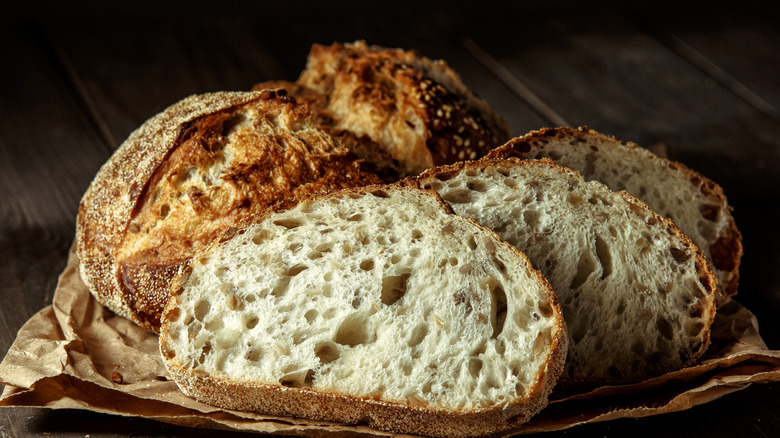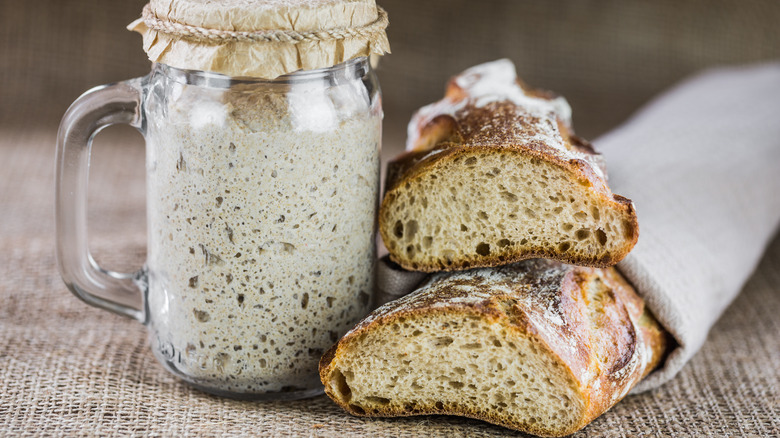This Is Why Water Temperature Is Vital To Your Sourdough Recipe
While sourdough can be used to leaven most baked goods, it's commonly used in bread making, where it's appreciated for its taste and health benefits. Sourdough is made from fermenting flour and water and can replace commercial yeast to leaven recipes like muffins, pizza dough crust, and bread. The natural leavener provides bread with its structure, increasing its volume as it proofs and flavors the dough, continuing to develop as the starter ages. Similar to yogurt and kimchi, sourdough contains lactic acid bacteria, which aids in digestion. The various types of sourdough bread are considered more nutritious, have more antioxidants than other varieties, and continue gaining popularity among bakers and bread-loving carb-a-holics.
In an interview with Mashed, Mike Laidler, a Publix bakery technical specialist, said that factors such as the water's temperature, the dough's hydration, how you mix and shape the dough, and proofing all impact how the loaf will turn out. He said, "The outcome of the bread can be changed by adjusting the water temperature." A few degrees in either direction will change the process, which can be the difference between smearing a hot, crusty loaf of sourdough with butter and a last-minute supermarket run.
Flavor, texture, and volume
Baking is as much a science as a delicious art and can be fickle. It is impacted by the weather, altitude, and quality of the ingredients, making bakers adapt recipes each time they bake. According to Laidler, the water's temperature is an essential factor affecting the "flavor, texture, and the volume of the finished loaf." To keep costs down and for ease of use, Laidler uses tap water when baking bread, but he noted that if your public drinking water has high levels of chlorine, you should use filtered water to avoid any negative taste. Laidler said, "Most prefer to use filtered water as to keep some of the minerals that are naturally present in water."
For the best results, Laidler prefers using 45-degree water when baking sourdough bread since the dough gets warmer as it mixes. When it's done mixing, the fully developed dough will reach room temperature or 78 degrees, ideal for yeast activation.
To slow down fermentation, bakers sometimes use colder water to allow the dough to develop more flavor before its final rise. However, Laidler warns that if the water is too cold, it will stunt yeast activation and prevent the dough from rising properly, resulting in a denser loaf. Conversely, if the water is warmer, the dough will rise quicker, but if it is too warm, the quicker rise can be at the expense of fully developed flavor and volume.

